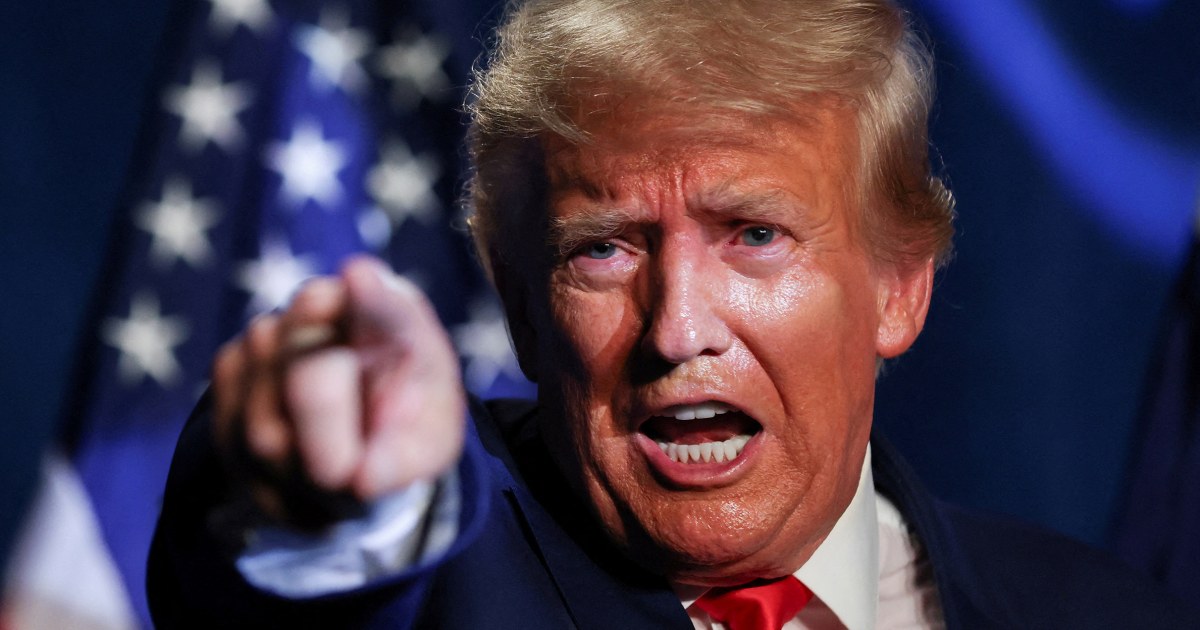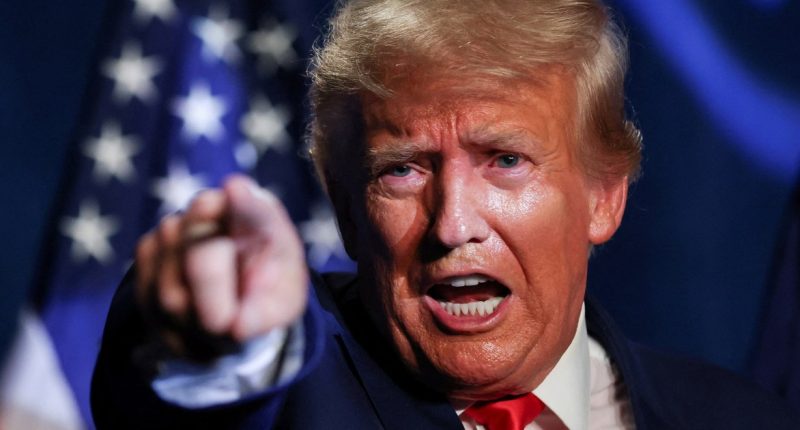
Another week, another set of polls showing Donald Trump with a huge edge over his opponents for the Republican presidential nomination. And a dive into the numbers shows that the former president’s lead may be more durable than the ones leading presidential candidates have enjoyed in past summers.
Quinnipiac’s latest national poll puts Trump’s GOP support at 62%, a full 50 points ahead of his nearest foe, Florida Gov. Ron DeSantis. A new Washington Post/Monmouth survey of the first-in-the-South primary state of South Carolina has Trump at 46%, with former South Carolina Gov. Nikki Haley a distant second at 18%. That lead is even more imposing when you consider that both Haley and Sen. Tim Scott, also from South Carolina, have won multiple elections there. And yet their combined share of support in the South Carolina poll — 28% — is just over half of Trump’s.
By now, there’s nothing new or particularly surprising about numbers like these. Since April, Trump has been steadily polling above 50% in rolling national averages and established formidable leads in key early states. Our own NBC News/Des Moines Register/Mediacom poll, for instance, gave Trump a 42%-19% advantage over DeSantis in Iowa last month.
It’s been awhile since a nonincumbent GOP candidate enjoyed polling leads this large and sustained at this point in the campaign. To find a parallel, you have to go back to the fall of 1999, when then-Texas Gov. George W. Bush was sitting on Trump-size leads nationally and in the early states.
Bush, of course, went on to win the nomination, though not without a real scare. He ended up getting crushed in New Hampshire by John McCain before surviving a make-or-break battle with McCain in South Carolina, only to turn around and suffer an upset defeat in Michigan, and then — finally — steady the ship enough to win a series of big states on Super Tuesday and force McCain’s surrender.
In other words, what looked in the fall of 1999 like a glide path to the GOP nomination turned into a bruising and politically costly primary battle for Bush, one that arguably damaged his image with general election voters and nearly cost him in what ended up being a razor-thin victory over Democrat Al Gore.
So, on the surface, the case of Bush and the 2000 Republican primaries offers a glimmer of hope to Trump’s rivals, who are staring at polls that look just as gruesome for them now as they did for Bush’s foes at this point in the ’00 cycle.
But inside the numbers, there’s a key difference, one that suggests Trump may be far less vulnerable to the kind of slippage that Bush ultimately suffered.
It has to do with how many Republican voters are telling pollsters that their minds are already made up and that they definitely plan to vote for the candidate they now support. That’s where we see significant differences between Trump’s standing now and Bush’s in the fall of 1999.
Let’s start with the national polling. This week’s Quinnipiac poll has Trump at 62%, DeSantis at 12% and the rest of the field in single digits.
A CNN/SSRS national poll last week that found a similar, though not quite as overwhelming, Trump edge, with him at 52% to DeSantis’ 18% ahead of the single-digit brigade.
Again, these are just two recent surveys, but they’re consistent with what national polling has been showing for some time. Now, let’s compare these to what the GOP race looked like nationally in the fall of ’99, via a CBS/New York Times poll from that time: Bush had 63%, while McCain was closest to him at 14%, with Steve Forbes and Alan Keyes behind him.
You can see how similar the Trump and Bush advantages appear to be. But this is where the commitment level of their supporters comes in. In this week’s Quinnipiac poll, 68% of Trump’s supporters say they are “firmly set on Trump no matter what happens leading up to the Republican primary.” Similarly, in the CNN/SSRS poll, 85% of Trump’s supporters say they will “definitely” support him.
But with Bush in 1999, the story was different. In that CBS/New York Times poll, just 43% of his backers said their minds were made up.
The same trend pops out in early state polling, too. As mentioned, our recent NBC News/Des Moines Register/Mediacom poll gave Trump a 42%-19% lead over DeSantis in Iowa, with no other Republican in double-digits. In that poll, 67% of Trump’s backers said that their minds were already made up.
Conversely, in the fall of 1999, the Register’s poll put Bush ahead of Steve Forbes 49%-20%, with McCain at 8% and Gary Bauer at 7%. But only 42% of Bush’s backers said their minds were made up.
In New Hampshire, where recent high quality polling has been scarce, there’s a University of New Hampshire poll from July that put Trump up 37%-23% over DeSantis. It also found that 76 percent of those Trump supporters said they will definitely vote for him.
In 1999, Bush — like Trump now — wasn’t polling as strongly in New Hampshire as elsewhere. He led McCain 41%-28% in a fall Quinnipiac poll of the state. But only 35% of Bush’s supporters in that poll said their minds were made up. That soft level of commitment helps explain why Bush proved so vulnerable in the state and ended up losing it by 20 points to McCain.
This is what makes Trump’s advantage in the new South Carolina poll that much more striking. Not only is he crushing both a “favorite daughter” candidate, Haley, and a “favorite son” candidate, Scott, he also enjoys a deep and unrivaled level of commitment, with 76 percent of current supporters saying they are definitely going to vote for him.
We are staring at a unique set of circumstances in the current Republican contest. Yes, we have seen front-runners with Trump-size leads before; besides Bush in 2000, there was also Bob Dole in the 1996 cycle. But neither Bush nor Dole enjoyed anywhere near the level of commitment that Trump appears to command from his supporters.
If these Trump backers mean what they say, then he has already locked down the vast majority of the support he’s now receiving in polls. What’s more, even among those who aren’t now on board with him, Trump remains quite popular, with favorability ratings in polls generally the strongest or nearly the strongest among the GOP field. It’s just as easy — or perhaps even easier — to imagine Trump’s support expanding further rather than evaporating.
Twenty-four years ago, the glide path that polls suggested Bush was on proved to be a mirage, and he ended up having to scratch and claw his way to the GOP presidential nomination. But with Trump, it may not be a mirage at all.
Source: | This article originally belongs to Nbcnews.com









